The evolution of cookware is things we do not give a second thought to. How did our cookware evolve from stone and turtle shells to beautiful enamelware, cast iron, stainless steel pots, and pans?
Many prefer to cook with cast iron despite the cookware material dating back thousands of years. However, others like to use pots and pans with modern cooking surfaces such as enamelware, ceramics, and stainless steel. At the same time, others prefer using chemically bonded cookware such as Teflon and ceramic coatings.
The article looks at the changes in cookware material and design. And the moment in human evolution that led to these changes.
How Has Our Cookware Changed Throughout History?
Table Of Contents
- When did humans first use fire to cook food?
- Why was it necessary to cook food?
- The primitive method of boiling water led to the discovery of early pottery.
- Pottery advances lead to earthen ovens and pots.
- The development of earthen pots widens our cooking methods.
- Metal cookware, copper, cast iron, and steel.
- Repairing cookware in early America (Coppersmiths and tinkers).
- The invention of wood ranges and gas cookers led to modern cookware designs
- 19th century and the mass production of stoneware and cast iron.
- Final thoughts on the evolution and history of cookware.
In The History Of Cookware, How Has Our Cookware Changed?
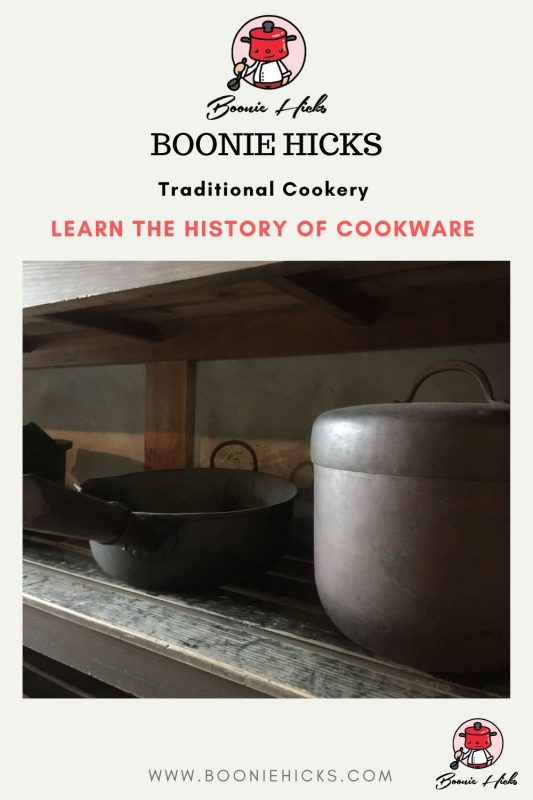
First, Humans Needed To Discover Fire.
Discovering how to make fire was a giant leap forward in human evolution. Undoubtedly, humans made fires to keep warm as their main priority. And also to keep predators away.
However, discarding food waste may have inadvertently been why humans first discovered cooked meat, as archaeologists worldwide have unearthed animal bones in firepits.
Undoubtedly, everything combustible went on the fire to prevent the fire from going out, including food scraps.
When Did Humans First Use Fire To Cook Food?
Evidence of humans utilizing fire at Israel’s Qesem Cave dates back 300,000 to 400,000 years. A hearth was discovered in the cave, showing that a fire was most likely continuously burning.
Why is a permanent fire pit important? It tells us the inhabitants most likely were not nomadic hunters and gatherers. However, a cave in South Africa suggests that the ancestors of humans used fire 2 million years ago.
So, When Did Primitive Humans First Cook Food?
Possibly 1.9 million years ago, however, this is debatable. Unfortunately, fires do not leave much for archaeologists to sift through, making dating difficult.
Why Did Primitive Humans Cook Food?
Not only does meat taste better when cooked, but it also kills bacteria. Importantly, meat would have been hard to come by. Hunting animals with very primitive tools would have been extremely dangerous and come with the risk of injury. But Humans knew cooking extended the storage life of food.
Cooking food also breaks down protein and plant cells, making food more accessible to cut, chew, and digest. Eating raw meat burns calories, so cooking meat provides more survival calories than raw meat. There are even theories that cooking food was instrumental in developing the human brain and leading to human evolution.
History Of Cookware
When Did Humans First Boil Water?
Humans probably started boiling liquids at a much later date than cooking meat. However, some think Neanderthals were able to boil liquids using birch bark.
How Did Early Humans Boil Water? By Using A Method Called Stone Boiling.
How did early humans boil water? They probably used a method called stone boiling. Evidence shows stones used in fire pits, which was most likely how early humans boiled water.
Stone boiling is a method by which stones are made hot in a fire. Then, the hot rocks go into a vessel containing water. And this subsequently raises the temperature of the water. The video demonstrates how early man may have boiled water.
Stone Boiling Was A Huge Discovery.
Stone boiling gave humans clean drinking because boiled water killed bacteria and purified stagnant water. It was a huge discovery, and the stone-boiling method provided a new cooking method. And humans were able to boil vegetables and meat.
How Safe Drinking Water Influences Our Kitchenware.
Stone boiling made water safe for humans to drink. However, humans needed containers to store their water, which led to the development of early pottery, such as clay bowls and vessels.
Humans could cook and boil water using these clay pots on open fires. This early form of pottery was our first purpose-made cookware. This development would later lead to fired clay to strengthen the pottery to create earthenware. And we still use earthenware pots and vases to this day.
Some people will call a glazed earthen pot stoneware. Stoneware was a popular way to store and preserve food before the invention of canning.
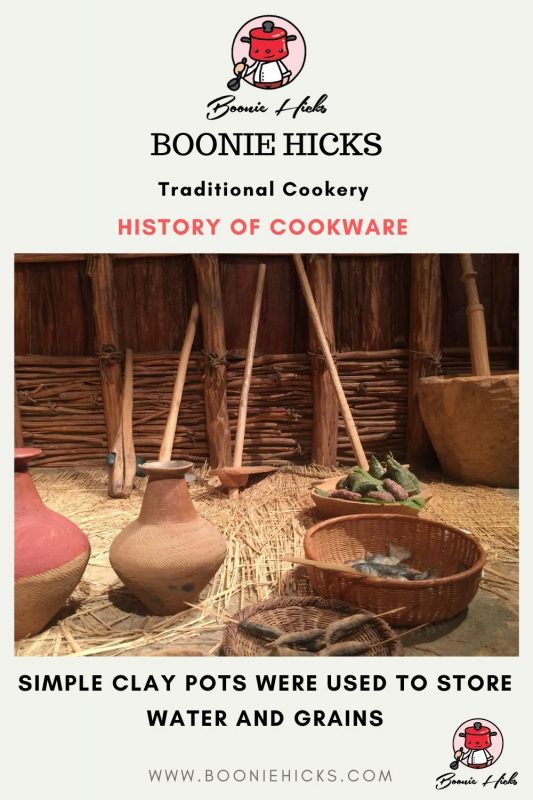
With Earthenware, Humans Found New Ways To Cook Food.
Early earthenware could separate food from ash and contain food. Clay pots also have insulation properties that make the cooking process quicker. Humans created a self-contained oven.
We still use self-contained today, but we have different names depending on the style and material used for the pot. These include.
- Dutch ovens
- Braisers
- Casserole dishes
- Tagines
- Roasters
With These Developments In Cookware Came New Cooking Methods, Such As:
- Blanching
- Boiling
- Simmering
- Steeping
- Steaming
Now Able To Boil, Humans Could Cook High-Energy Starchy Food That Required Boiling, Such As:
- Potatoes
- Corn
- Rice
When Was Earthenware First Used?
The earliest examples of pottery show it was first used in China and spread throughout the region before knowledge traveled West. Who knows when humans invented pottery? But it was a long time ago.
Archaeologists have unearthed ceremonial pottery dating back to 25000-29000 BCE, the earliest known pottery in China, Japan, and the world. It is most likely that early pottery techniques moved from the East to the West.
To this day, Japanese and Chinese make some of the most beautiful handcrafted pottery. Some sort-after examples often have imperfections that make each vessel uniquely beautiful.
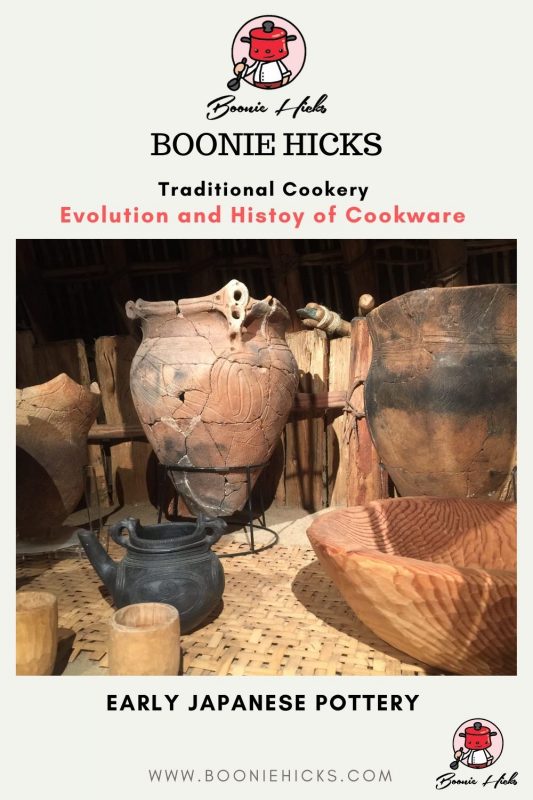
In The Neolithic Age, Humans Cultivated Early Cereals.
Archaeologists found millet, one of the earliest grains humans grew, in some of the earliest pottery discovered in China. The grain was an important food source during the time.
Earthenware vessels would also be helpful for millet storage for soups in Asia and Africa.
Moreover, Europeans also used glazed clay bowls to boil cereal crops. Emmer wheat, Einkorn wheat, and barley are other early cereals.
The Evolution Of Cookware Enters A New Age: Metalware.
Early Copper Cookware
Humans fashioned copper into tools around 9000 BCE. The Mesopotamians perfected copper metal, working around 4500 BCE. Copper was the first metal used on a large scale. Historians do not know when exactly people started to use copper in cookware. It has been well-documented that the Egyptians, Greeks, and Romans all utilized copper.
The metal was also easy to work with as workers could roll it into sheet metal. Iron, on the other hand, had to be forged into shape while hot. On the other hand, copper can be beaten into shape while cooled by merchants. Copper also happens to be an excellent conductor of heat.
These Great Civilizations Utilized Copper Cookware For:
- Cooking tools
- Containers
- Cooking pots
Households May Use Large Copper Cauldrons For:
- Washing
- Boiling water
- Cooking food
Coppersmiths, Tinsmiths, And Tinkers.
Copper cookware was a popular choice for centuries. Copper cookware was used in colonial America, although it would have been more expensive than cast iron. Major cities would have coppersmiths or tinsmiths to work copper into cookware. They also re-tined old copper cookware.
Another profession was repairing copper cookware in towns too small for a full-time coppersmith, and they were known as tinkers. Tinkers were skilled travelers and made a living by traveling from one place to another. They repaired pots and pans and probably sold metalware if they had a horse and cart.
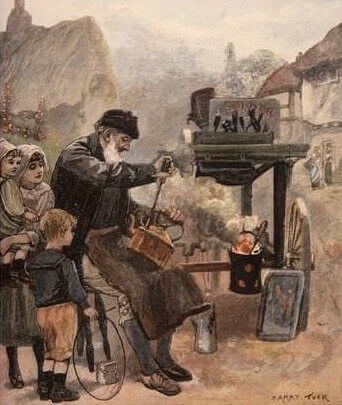
Cast Iron
Enter our beloved cast iron, which dates back to the 5th century BCE in China. Cast iron is cheaper than steel, and foundry workers first used cast iron for pots, pans, and farming equipment. In the 1st century, China developed a simple blast furnace. However, until the 15th century, Europeans adopted cast iron technology. Americans started molding cast iron for cauldrons during European migration.
If you want to know more, here is an interesting article on the benefits of cast iron. However, Europeans did not use cast iron until the 15th century. Before this, cast iron was brittle and only utilized when technology advanced. The casting process improved the quality and strength.
Instead, early Europeans used smelting techniques and iron hammered into bowls and cookware. Cast iron, on the other hand, was poured into a mold. However, cooking techniques remained similar in Europe and Asia. And people in different continents cooked on a hearth over an open flame.
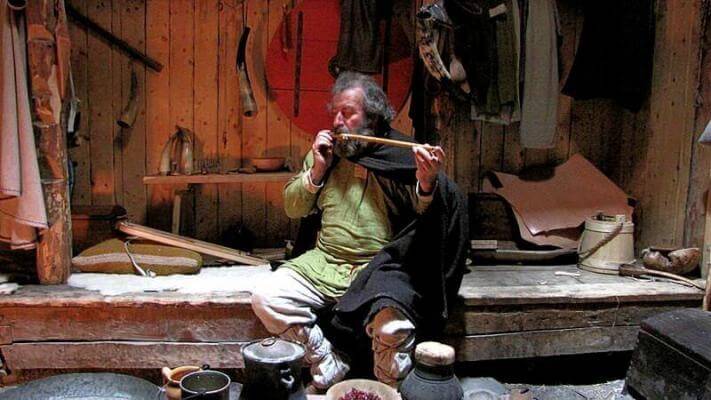
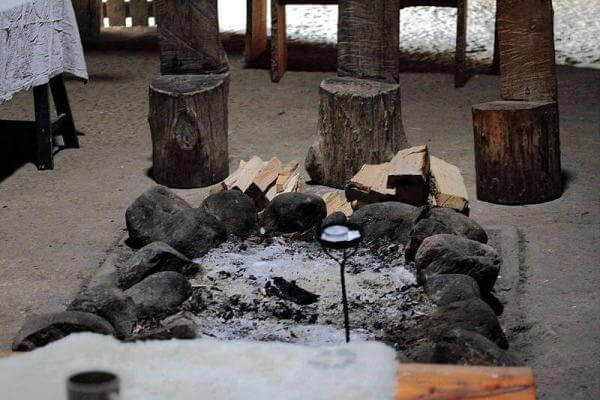
People Used Sturdy Iron Cookware On An Open Fire Right Up To The Invention Of The Wood Range.
Since early households used metal cookware on an open flame, designs have become popular.
- Handles so users can hang cookware on a pole over the direct heat but not in it.
- Ring on the base to disperse heat and lift it out of the direct heat.
- Longer handles to slow heat from quickly transferring to the handle.
- Feet to lift the cookware out of the hot coals.
What Was The Cookware Of Choice In The 18th-19th Century?
- Stewpots
- Bean-pots
- Cauldrons
- Kettles
- Dutch ovens
- Scotch bowls
Although people did fry their food, any meat was a luxury until the advent of mass farming and refrigeration. Many families raised livestock and preserved meat, and many urban households kept backyard chickens.
The Dutch Oven was the cookware of choice. The Dutch Oven was the perfect cookware. People ate more porridge, stews, and soups than we eat today. And it was an ideal pot for simmering all day over the fire or on the wood range.
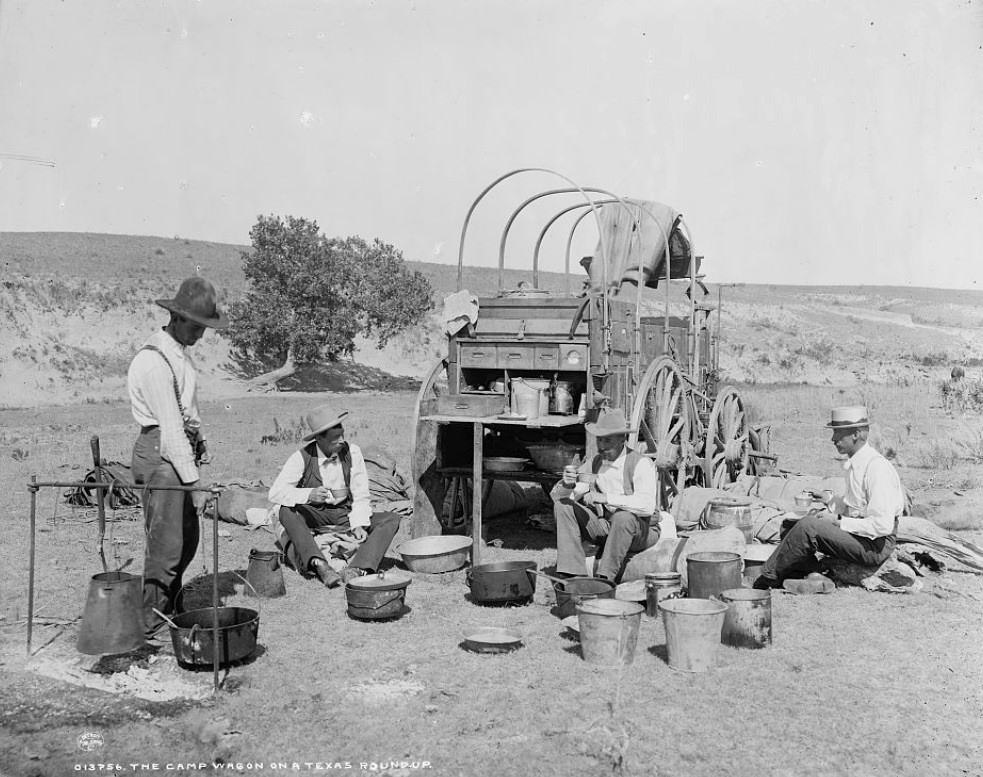
The New World Provided A Manufacturing And Agricultural Powerhouse.
The industrial revolution would change the world forever. Rapid urbanization in England saw the increase of the wealthy, middle class, and, unfortunately, the poor. Massive achievements in technology and scientists and inventors were the day’s celebrities.
There was also massive growth in America, becoming the world’s factory. Favorite Stove and Range, Griswold Manufacturing Company, and Wagner Manufacturing Company became huge powerhouses.
Meanwhile, in the South Pacific, New Zealand, Australia, and South Africa specialized in agriculture, supplying food to the increasing population of England.
How Did Cookware Change?
People still cooked on fire, and many used Dutch ovens. However, as people became wealthier, many changed how they cooked—from open-fire cooking to wood ranges, which Benjamin Franklin first invented. In 1826, an English inventor called James Sharp received a patent for the gas oven. In 1892, Thomas Ahearn first developed the electric range.
Soon, the long handles on cookware became shorter. And bail wire handles on Dutch ovens become side handles on pots. To make it easier to carry in and out of the range. Also, with a ready supply of meat, our diets slowly changed, and frying became more popular. By the 20th century, skillets replaced the Dutch Oven as the go-to pan in the kitchen.
The Evolution Of Cookware Continues With Many Modern Developments And Metal Alloys.
Of course, humans have experimented over the years with different materials, such as:
- Stoneware
- Stainless steel
- Teflon
- Glass
- Aluminum
- Carbon steel
I grew up in a house using aluminum and later Teflon. In hindsight, neither material may have provided safe cooking surfaces.
We certainly have progressed in the development of our cookware. However, ceramic dishes and cast iron remain popular because of their durability. Stainless steel is a great option too. And it is now the go-to cookware in commercial kitchens and many households.
Evolution and history of cookware, from simple bowls to modern cookware
Over the last couple of centuries, the introduction of metal cookware like iron, copper, and aluminum has entered the marketplace. Stainless steel is now a favorite cookware material for many because it is non-reactive to acidic foods and hard-wearing.
Each metal or ceramic product has its advantages and disadvantages. Some pans heat up quicker than others, and some distribute the heat more evenly. Whatever your need, there is cookware for everyone. And we can thank our ancestors for this.
Further Reading.
If you are interested http://www.visual-arts-cork.com/pottery.htm has a fascinating timeline on ancient pottery.

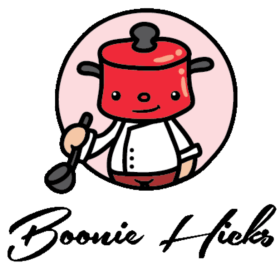
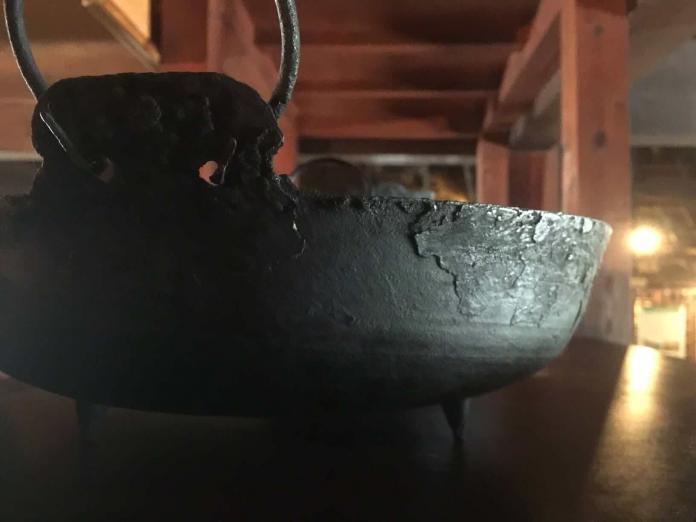
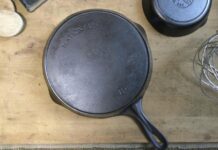
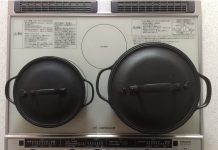
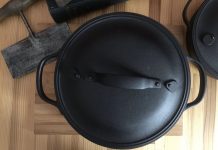



I have an 8 inch cast-iron frypan that I have no recollection where I got it but it’s very interesting. It has no Hallmark imprint on it but the sides of it are hammered all around.
But the most astounding part is how smooth it is on the inside. As old as it is it is a smooth as a piece of glass. Any idea where this might’ve come from?
Hi Chris
You’re lucky to have an old hammered skillet. There are a lot of collectors that love hammered pieces. And are willing to pay a pretty penny for ironware in good condition. Have a Google image search for the following:
Chicago hardware foundry hammered cast iron
Lodge hammered cast iron
Wagner hammered cast iron
Griswold hammered cast iron
Ugly hammered cast iron (Unknown markers).
Every foundry had a slightly different finish to the cast iron. Some hammered ironware have defined indentations, and some have a subtle finish. So you might be able to identify the foundry from the hammered design.
I hope this points you in the right direction. Good luck
Hi Mr Hicks,
Hopefully, I can share some knowledge on the development of Plate Stoves, and how they influenced the cookware we use today.
We saw the development of plate stoves or ranges purchased by wealthy customers, hotels and businesses from mid-to-late 1700’s. It was towards the end of the 1700’s that boiler holes (or Stove Eyes) were seen, and the change from a heating source to providing the means to prepare food started to take root. The early cookware made to take advantage of new stove design was kettles and pots having a pit bottom. And the first cooktop spiders went the same route.
These pans rested in the stove hole, some had a round bottom and other flat, having either short tab feet or legs up to 3/4 inch. They also had a wide top rim (generally 3/4 inch around) that most people assume was for a cover, BUT being there was no standard for cookware sizes the wide rim allowed ex. a 6 inch Pan to rest in a 7 1/2 opening. Lots of innovation happening…patents gone wild. It would be around the 1830’s that pans finally made their way out of the stove to level or above the cooktop.
Old photographs are a great resource, but you really need to see and touch a lot of them to start noticing small details. And how New England and the southeastern PA have so much in common. VT/NY west to Ontario outward towards Wisconsin show their own style.
Thanks Boonie, you may also want to research Count Rumford, he had a huge impact on the development of cookware.
Hi Scott
Thank you ever so much for sharing your expertise on early stoves, and how stove innovation impacted cookware design. It certainly is appreciated and adds to the resource. You’re very fortunate to see many different models and makes. I’m a New Zealander and our stove history is rather limited, with Shacklock Stoves being the most well-known.
I’ll have to check out Count Rumford and his inventions.
It look like Scott has come over from a Facebook group called The Iron Works! Collectors of Early Iron! If you are interested in early cast-iron cookware you may want to check out the group.
Hi, I was wondering if you knew anything about the Manufacturing Co. using the Term Neverbreak with relation to Carbon Steel Skillets. Neverbreak is stamped on the top of the handle along with a # 8 ect. depending on the Diameter.
Thanks!
Hi Bruce
Unfortunately, I’m unaware of the maker of your skillet. But you have a neat piece of American cookware history. These pans are known as cowboy skillets and were designed as lightweight sturdy pans for traveling and for use on open flame. Cowboy skillets tend to warp, but this won’t affect the cooking ability. And will make you feel like a real pioneer. Sounds like fun
Enjoy you little piece of history.
Hi Boonie,
Do you have any information about the baking materials in the late 1800s? Of course, cast iron was available for nearly anything, including gems and muffins. I’m trying to determine when tin or aluminum was used for baking. Any insights?
Thanks,
Dann
Hi Dann
Thanks for getting in touch.
It’s a really interesting era for baking. I see a lot of antiques used in the Victorian era made from tin and enamelware. Such as flour tins, biscuit tins, and candle models. But the transition between cast iron, tined copper or earthenware is not so clear cut.
I notice in the mid 19th century cookery books, the authors gave instructions to “bake in pans”. However, in the late 1800s and early 1900s, that term had completely changed to “bake in a buttered tin”.
In Britain as the wealth grew in the late 1800s and early 1900s, bakers introduced oddly shaped bread tins to display in the front windows of their bakery’s in entice customers.
As for aluminum that’s completely out of my league, and I consider it mid 20th century cookware. You might come across old advertising baking sheets from flour companies such as PY-O-My Pastry Mix. Ekcology I believe was another well-known mid 20th century brand that produced aluminum bakeware.
I checked out your website btw, and it’s looking good, well done.
Anyway hope this was some interest to you.
Cheers
Brett a.k.a. Boonie
I have my mother’s 1930s to 1940’s Korean cast iron Dutch ovens and skillets. One Dutch oven seems to have a finish that is very smooth and the other seems to have some sort of black finish that is worn off towards the bottom half. They are not pitted although the skillet has a few pits.
I want to clean use them. Could they be possibly made of aluminum? Anything you can tell me about Korean cast iron products in that time frame would be very helpful.Thanks
Hi Fran
Thanks for getting in touch.
It’s fantastic you want to restore your mothers old cookware.
Korean manufacturers ramped up production of Western style cast-iron cookware in the 1960s. Much of this early cast-iron cookware were copies of Lodge skillets and Dutch ovens. Putting low cost Asian manufacturers from Japan and Korea in direct competition with local manufacturers.
If you have older cookware I’m sure it would be well made and smooth. It also sounds like your cast-iron is in great condition for the age, and shallow pitting is known as “flea bites”.
Aluminum cookware has been used since the late 1800s. However, unseasoned cast-iron is shiny, and the color can range from grey to silver. This is often a surprise to those new to cast-iron cookware. Use a magnet to test your cookware. A magnet will stick to an iron pan but will fall off aluminum cookware.
Hope this helps.
Interesting site. I never thought of looking back further than the pioneering days. It’s amazing we seem to be returning the way we used to cook for example stoneware and iron. And using modern cookware bonded with tradition cooking surfaces such as ceramic.
Thanks for your research.
Thanks Jeanette
I see you’re from New Zealand. It’s great to have readers from all over the world including my homeland. I hope to include the history of British ironware that early kiwi settlers used in their the late 1800s to early 1900s.
Thanks for leaving a comment.